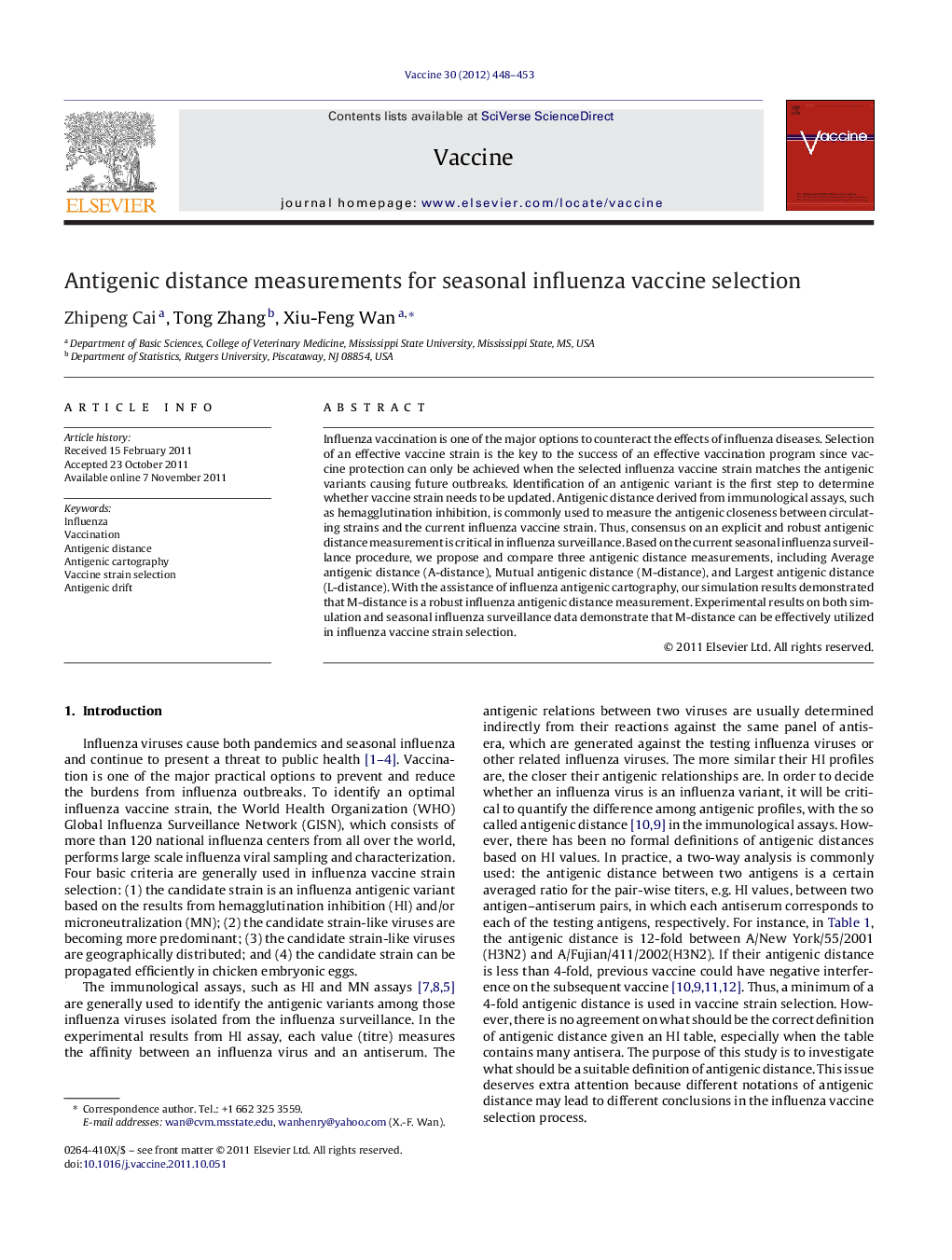| Article ID | Journal | Published Year | Pages | File Type |
|---|---|---|---|---|
| 2403917 | Vaccine | 2012 | 6 Pages |
Influenza vaccination is one of the major options to counteract the effects of influenza diseases. Selection of an effective vaccine strain is the key to the success of an effective vaccination program since vaccine protection can only be achieved when the selected influenza vaccine strain matches the antigenic variants causing future outbreaks. Identification of an antigenic variant is the first step to determine whether vaccine strain needs to be updated. Antigenic distance derived from immunological assays, such as hemagglutination inhibition, is commonly used to measure the antigenic closeness between circulating strains and the current influenza vaccine strain. Thus, consensus on an explicit and robust antigenic distance measurement is critical in influenza surveillance. Based on the current seasonal influenza surveillance procedure, we propose and compare three antigenic distance measurements, including Average antigenic distance (A-distance), Mutual antigenic distance (M-distance), and Largest antigenic distance (L-distance). With the assistance of influenza antigenic cartography, our simulation results demonstrated that M-distance is a robust influenza antigenic distance measurement. Experimental results on both simulation and seasonal influenza surveillance data demonstrate that M-distance can be effectively utilized in influenza vaccine strain selection.
